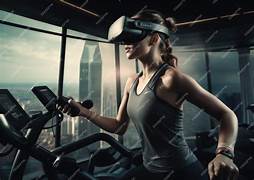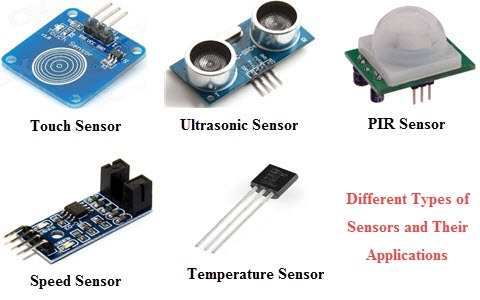
Virtual Reality for Fitness: A New Workout Experience.
Virtual Reality is transforming fitness by merging immersive technology with physical exercise, making workouts more fun, engaging, and accessible. From boxing in sci-fi arenas to dancing on virtual stages, VR fitness offers gamified, full-body workouts that motivate users of all levels. It's not just a trend—it’s the future of how we move, train, and stay healthy.
✨ Raghav Jain

Introduction
In an age where digital innovation is transforming nearly every aspect of life, fitness has joined the revolution through Virtual Reality (VR). Once primarily associated with gaming and entertainment, VR is now a game-changer in health and fitness. By combining immersive virtual environments with physical movement, VR fitness makes working out more interactive, motivating, and effective. Whether you're boxing in a sci-fi arena, dancing to global beats, or scaling virtual mountains, VR fitness offers a thrilling and effective alternative to traditional exercise.
1. What is VR Fitness?
VR fitness refers to using virtual reality technology to engage in physical activities. These workouts typically involve wearing a VR headset and using motion-tracked controllers or full-body tracking systems. The user performs physical movements in sync with a virtual environment, blurring the lines between gaming and exercising.
Unlike standard gym workouts, VR fitness transforms the act of exercising into a game-like experience. Users often burn calories without realizing the physical exertion because they are immersed in fun and goal-oriented tasks.
Popular platforms and games like Supernatural, FitXR, Les Mills Bodycombat VR, Beat Saber, Holofit, and The Thrill of the Fight offer structured workouts for various fitness goals.
2. How VR Is Changing the Workout Landscape
a. Immersive Environments
One of VR’s biggest advantages is the ability to transport users into dynamic, inspiring worlds. You can jog through a serene mountain trail, spar with a robot in space, or dance on a neon-lit stage in Tokyo. This novelty keeps users engaged and combats the monotony of traditional workouts.
b. Gamification of Fitness
VR uses game design elements—like points, levels, achievements, and real-time feedback—to motivate users. This gamification helps people stick to their routines by making exercise feel more like entertainment than a chore.
c. Tailored Programs
VR workouts can be customized based on fitness levels, goals, and preferences. Whether someone is a beginner or an athlete, VR platforms adjust difficulty, duration, and intensity. AI integration also allows real-time tracking of performance and progress.
3. Benefits of VR Workouts
a. Increased Motivation and Engagement
VR helps overcome the mental barrier of starting or sustaining a workout by turning it into an exciting challenge. Users are more likely to return because the sessions feel like play rather than punishment.
b. Accessibility and Convenience
Users can work out anytime, anywhere—at home, in a hotel, or even during a break at work. This flexibility is invaluable, especially for people who dislike gyms or live in areas without access to fitness centers.
c. Low-Impact, Full-Body Exercise
Many VR games offer cardio-intensive yet low-impact workouts. These exercises are suitable for people with joint problems or those recovering from injury. Some apps also incorporate strength training and stretching.
d. Mental Health Benefits
Exercising in virtual natural environments can reduce stress, anxiety, and depression. Games that focus on rhythm, meditation, or movement also promote mindfulness and mental clarity.
e. Social Interaction
Several platforms allow users to work out with friends or strangers around the world. This social VR fitness aspect fosters motivation and accountability while eliminating the intimidation often felt in traditional gyms.
4. Popular VR Fitness Platforms
a. Supernatural (Meta Quest)
A subscription-based fitness app with full-body cardio, meditation, and stretch classes led by real trainers. It uses real-world scenic backdrops and licensed music from major artists.
b. FitXR
Offers group classes in boxing, dance, HIIT, and sculpting. FitXR emphasizes multiplayer features and trainer-led sessions.
c. The Thrill of the Fight
A realistic boxing simulator praised for its intense, full-body workouts. Users can compete with virtual opponents that simulate real fighting tactics.
d. Holofit
Connects with indoor rowing machines, bikes, and ellipticals to gamify traditional equipment-based cardio through virtual races and exploration.
e. Beat Saber
Although not primarily a fitness app, its rhythm-based lightsaber game can deliver a powerful cardio session. Popular among beginners.
5. Scientific Backing and Calorie Burn
According to a study by the Virtual Reality Institute of Health and Exercise, VR workouts can rival or even exceed traditional workouts in terms of calorie burn. For instance:
- Thrill of the Fight: up to 15 calories per minute
- Beat Saber: around 6–8 calories per minute
- FitXR Boxing: up to 12 calories per minute
The American Council on Exercise (ACE) supports the claim that VR can offer effective cardiovascular exercise, particularly when sessions are structured and consistent.
6. Challenges and Limitations
a. Cost of Equipment
The upfront cost of VR headsets (like Meta Quest 2 or 3, HTC Vive, etc.) and subscriptions may deter some users. However, prices are falling as the tech becomes mainstream.
b. Space Requirements
Some games require a minimum play area and proper ventilation. Not all households have sufficient space.
c. Motion Sickness
Some users may experience VR-induced nausea, especially in fast-moving or poorly designed environments.
d. Limited Strength Training
While excellent for cardio and agility, VR still lacks the resistance component needed for muscular development. Hybrid routines with dumbbells or resistance bands are recommended.
e. Overheating and Sweat
Intense workouts can cause fogging and sweat build-up in the headset, reducing comfort and hygiene. Sweat-resistant covers and fans are helpful accessories.
7. Future of VR Fitness
The future of VR fitness looks incredibly promising:
- AI-Driven Coaching: Real-time feedback and performance optimization.
- Haptic Suits & Gloves: Enable physical feedback, increasing immersion and interactivity.
- Mixed Reality (MR): Blend real and virtual elements for enhanced workouts.
- Virtual Gyms & Studios: Shared workout spaces in the metaverse.
- Health Integration: Sync with wearables (like Apple Watch, Fitbit) for biometric tracking.
In today’s tech-driven world, the fusion of entertainment and wellness is reaching new heights with the advent of Virtual Reality (VR) fitness, a futuristic trend transforming how people perceive and engage in physical activity. Once limited to gaming and immersive storytelling, VR has carved out a dynamic niche in the fitness industry, turning workouts into thrilling, gamified adventures that go far beyond the monotony of traditional gym routines. Imagine stepping into a virtual boxing ring and dodging punches from a lifelike opponent, cycling through the streets of Paris from your living room, or dancing atop a neon-lit rooftop in Tokyo—all while breaking a serious sweat. With platforms like Supernatural, FitXR, Beat Saber, The Thrill of the Fight, and Holofit, users can experience heart-pumping cardio, muscle-toning resistance, and even calming meditation in fully immersive environments that keep motivation levels high and boredom at bay. What sets VR fitness apart is its ability to gamify exercise—users accumulate points, unlock achievements, and climb leaderboards, which triggers a dopamine response similar to playing a favorite video game. This unique combination of fun and functionality is especially powerful for people who struggle to maintain a consistent fitness routine, offering a sense of progress and accomplishment that drives long-term commitment. Accessibility is another major advantage; with a VR headset and some clear space at home, users can work out anytime and anywhere without the need for expensive gym memberships or commuting hassles. For those intimidated by public workout spaces or overwhelmed by traditional equipment, VR offers a private, judgment-free zone where one can move, sweat, and learn at their own pace. Moreover, the social aspect of VR is rapidly evolving—many platforms now include multiplayer modes, live classes with instructors, and virtual fitness communities that offer support, competition, and camaraderie. Scientifically, VR workouts have been shown to burn as many, or even more, calories than conventional forms of exercise; for example, boxing simulators like The Thrill of the Fight can help users burn up to 15 calories per minute, putting it on par with high-intensity interval training (HIIT). The immersive nature of VR tricks the brain into forgetting that it's exercising, focusing instead on the mission, game, or experience at hand, which results in longer sessions and more consistent participation. Furthermore, many VR fitness games promote full-body movement—incorporating squats, lunges, punches, twists, and jumps—providing a functional workout that improves coordination, flexibility, balance, and cardiovascular health all at once. The mental health benefits are just as impressive: by transporting users to beautiful virtual landscapes or upbeat fantasy worlds, VR has the power to reduce anxiety, uplift mood, and combat depression. Games that integrate rhythmic movement and music, such as Beat Saber, also help to release endorphins and increase mindfulness. However, despite its many benefits, VR fitness does come with a few limitations. The initial investment in a headset like the Meta Quest 3 or HTC Vive (ranging from $300 to $700) and the recurring cost of app subscriptions may deter some individuals, though the long-term savings from canceled gym memberships may offset these expenses. Additionally, not everyone has a dedicated space for VR workouts, and issues like motion sickness, overheating, or foggy lenses during intense sessions can affect user comfort. While cardio and agility training are well-covered, VR is still evolving in the realm of strength training, with few options that can effectively replace dumbbells, resistance machines, or barbells; as such, hybrid workouts that combine VR with traditional strength tools are currently the best approach for balanced fitness. Despite these drawbacks, the future of VR fitness looks incredibly promising—advancements in haptic feedback (wearable suits and gloves that provide tactile responses), AI coaching systems that deliver real-time feedback, mixed reality integrations, and syncing with biometric wearables (like smartwatches and fitness trackers) are paving the way for more personalized and effective workout experiences. Imagine doing yoga with a virtual instructor who can correct your posture through AI motion tracking, or playing a sport in a metaverse arena where you feel every hit, swing, and vibration through a haptic vest. As VR headsets become lighter, cheaper, and more powerful, and as the global fitness culture shifts toward at-home, technology-supported solutions, VR is poised to be more than just a gimmick—it’s becoming a legitimate alternative for millions seeking motivation, variety, and results in their health journeys. In summary, VR fitness is not just about flashy visuals or entertainment—it’s a paradigm shift that empowers users to move more, have fun, and prioritize their wellness in a way that fits the modern lifestyle. By merging innovation with physical exertion, virtual reality is rewriting the rules of exercise and opening up a new dimension of possibility for beginners and athletes alike.
While the initial wave of VR fitness platforms focused primarily on cardio-intensive games and immersive simulations, recent advancements are pushing the boundaries even further, integrating strength training, mindfulness, rehabilitation, and even therapy into the virtual domain, thereby elevating VR from an entertainment novelty to a holistic wellness tool. Innovations in motion tracking, AI-driven coaching, haptic feedback, and biometric integration have made virtual workouts more responsive and personalized than ever before. For instance, real-time feedback powered by artificial intelligence can now correct your form, track your reps, and recommend modifications based on fatigue or heart rate, creating a virtual trainer experience tailored uniquely to each user. VR studios and apps like Les Mills Bodycombat VR and Reakt Performance Trainer have begun offering routines that combine plyometrics, balance, and strength with high-fidelity visuals, allowing users to condition their bodies in diverse, engaging ways. The rise of mixed reality (MR)—which blends real and virtual environments—further enhances the experience by overlaying holographic workout guides in your actual living space, helping bridge the gap between digital immersion and physical grounding. Additionally, the integration of VR fitness with wearable tech such as Apple Watch, WHOOP, or Fitbit allows users to track calories burned, monitor sleep and recovery, and analyze long-term health patterns. This kind of data-driven insight not only boosts accountability but also helps users fine-tune their fitness routines to prevent burnout and overtraining. Moreover, VR fitness is finding meaningful applications in clinical rehabilitation and senior wellness programs, as its gamified structure can assist patients recovering from strokes, surgeries, or joint injuries by encouraging consistent, low-impact movement in a safe and monitored environment. For elderly users, VR programs focused on balance, memory, and coordination offer cognitive and physical benefits that support aging in place. From a psychological perspective, VR’s immersive power can also be harnessed to treat anxiety disorders, PTSD, and depression through movement-based therapeutic programs, combining exposure therapy with physical engagement. These applications are steadily gaining traction in hospitals, senior care centers, and therapy clinics around the world. Additionally, the community aspect of VR fitness has evolved from a passive leaderboard system to fully-fledged virtual gyms, where users can attend live classes, cheer on others, or compete in real-time with friends across continents. This sense of virtual camaraderie not only motivates users but also replicates the social benefits of traditional gyms, minus the intimidation factor. Platforms like VZfit and OhShape are cultivating vibrant communities where players share progress, encourage one another, and even host virtual events, such as dance-offs or charity marathons, from their living rooms. The inclusive nature of VR also breaks down barriers for users with disabilities or those who feel self-conscious about exercising in public, making it a truly democratizing force in fitness. As corporate wellness programs begin to adopt VR fitness subscriptions as part of employee benefit packages, and schools explore VR physical education modules to keep students active during remote learning, its utility and reach are only expected to expand. Even in elite athletic training, VR is finding its niche; athletes use it for reaction training, mental visualization, and simulated gameplay to improve decision-making and hand-eye coordination under pressure. Despite these exciting developments, a few important considerations remain. While headset prices are dropping and more budget-friendly models are hitting the market, widespread adoption still depends on improving comfort and accessibility. Long sessions may lead to eye fatigue or overheating, and those prone to motion sickness may find certain games or simulations disorienting. Companies are working on ergonomic headsets with better ventilation, adjustable lenses, and lighter builds to enhance wearability. Another area of concern is content quality and diversity; not all VR fitness apps are created equal, and some lack proper physical programming or safety precautions, which could lead to injuries if users perform movements incorrectly. As a result, it's essential for developers to collaborate with certified fitness professionals to ensure scientifically sound, user-safe exercise routines. Parental controls and age-appropriate content filters are also critical as children and teens increasingly explore VR fitness games. Still, the trajectory is promising: with the development of full-body tracking suits, treadmill platforms, and resistance feedback systems, the VR fitness of tomorrow could resemble sci-fi training simulations we once thought decades away. Imagine a world where you can enter a virtual dojo, perform martial arts under the guidance of a holographic sensei, or hike through a procedurally generated rainforest that responds to your biometric stress levels by adjusting intensity and scenery. These experiences not only stimulate the body but also nourish the imagination, making fitness not just a chore, but a captivating journey. As mental health awareness continues to rise, and more people seek balanced, sustainable wellness practices, VR’s unique capacity to combine physical exercise, psychological engagement, and social connection in one package may prove to be its most powerful asset. Even as traditional gyms re-open and group fitness returns post-pandemic, the flexibility, privacy, and entertainment value of VR workouts make them a lasting addition to the fitness ecosystem rather than a temporary trend. It empowers users to set their own pace, environment, and challenges, placing control back into their hands. With every innovation—from heart-rate-based adaptive gameplay to immersive biometric storytelling—VR fitness pushes us closer to a reality where working out is not only easier but something we look forward to. Ultimately, Virtual Reality is revolutionizing how we move, how we train, and how we care for our bodies and minds. It turns any space into a personal fitness arena and transforms anyone, from sedentary beginners to performance-focused athletes, into active participants in their own health narrative. As technology becomes more intuitive and widespread, the question is no longer whether VR fitness will shape the future—but how soon we’ll all be living in it.
Conclusion
VR fitness represents a shift in how we view and engage with physical activity. It’s accessible, fun, and effective—blending technology, entertainment, and health in a single ecosystem. As the technology matures, its ability to transform lives and redefine wellness routines will only grow stronger. For anyone seeking a motivational spark in their fitness journey, VR might just be the future.
Q&A Section
Q1:– What is Virtual Reality fitness?
Ans:– VR fitness involves using virtual reality headsets and motion tracking to engage in physical workouts within immersive digital environments, combining gaming and exercise for a more enjoyable workout experience.
Q2:– Is VR fitness effective for losing weight?
Ans:– Yes, VR workouts can burn significant calories, especially with high-intensity games like boxing or dancing, making them effective tools for weight loss when paired with a balanced diet.
Q3:– What equipment is needed for VR fitness?
Ans:– Typically, a VR headset (like Meta Quest), motion controllers, and enough space to move safely. Optional accessories include heart rate monitors, sweat-proof covers, or haptic wearables.
Q4:– Can VR replace the gym?
Ans:– VR is a great alternative for cardio and mobility workouts, but it may not fully replace strength training or specialized equipment available at a gym.
Q5:– Are VR workouts suitable for beginners?
Ans:– Absolutely. Many VR fitness apps offer beginner-friendly modes with guided sessions, making it accessible to people with all fitness levels.
Similar Articles
Find more relatable content in similar Articles

Cybersecurity Trends in a Digi..
As digital connectivity expan.. Read More

The Role of Robotics in Streng..
Robotics plays a vital role i.. Read More

Privacy in pervasive computing..
Exploring the challenges and i.. Read More

Solar Tech Breakthroughs: Char..
"As our world grows increasing.. Read More
Explore Other Categories
Explore many different categories of articles ranging from Gadgets to Security
Smart Devices, Gear & Innovations
Discover in-depth reviews, hands-on experiences, and expert insights on the newest gadgets—from smartphones to smartwatches, headphones, wearables, and everything in between. Stay ahead with the latest in tech gear
Apps That Power Your World
Explore essential mobile and desktop applications across all platforms. From productivity boosters to creative tools, we cover updates, recommendations, and how-tos to make your digital life easier and more efficient.
Tomorrow's Technology, Today's Insights
Dive into the world of emerging technologies, AI breakthroughs, space tech, robotics, and innovations shaping the future. Stay informed on what's next in the evolution of science and technology.
Protecting You in a Digital Age
Learn how to secure your data, protect your privacy, and understand the latest in online threats. We break down complex cybersecurity topics into practical advice for everyday users and professionals alike.
© 2025 Copyrights by rTechnology. All Rights Reserved.